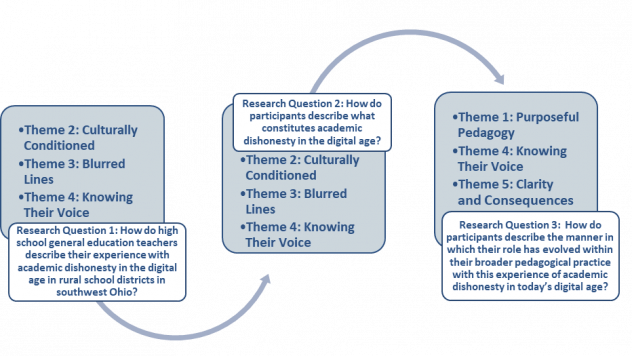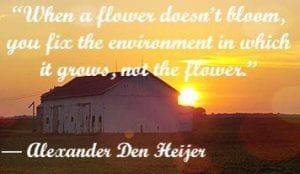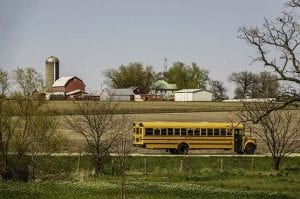
The headlines of May 11, 2016, article reads, “High-tech devices take cheating to a new level in Thai schools” (Associated Press, 2016). During the medical school admission tests for Rangsit University in Thailand, several students were caught using smartglasses and smartwatches to cheat on those tests, in real time. Because of this incident, students are now met with much higher security at testing sites and could face possible prison time if caught cheating (Asian Correspondent, 2016; Wee, 2016). However, this incident did not come without warning. Counter (2014) described in their headline that, “With shrinking wireless devices, online classes and the emergence of wearable technology, it’s easier than ever to cheat.” Academic dishonesty is not a new problem but there are now “New frontiers in high-tech cheating” (Counter, 2014, para. 1).
As noted by McCabe (2001), the digital age “raises new and significant problems for both students and teachers” (para. 15) with regards to the academic dishonesty phenomenon. Throughout my research, the participants would use words like accountability, consequences, common language/vocabulary, and commitment when it came to this subject. Although there is not a widely accepted definition of what constitutes academic dishonesty, the participants discussed wanting clarity concerning this issue. I believe every classroom teacher is seeking this same clarity when it comes to the gray/hazy area that the assimilation of 21st-century technologies into the classroom has created.
Research cannot understate the role of the classroom teacher in regard to managing academic dishonesty. In speaking with teachers during my research, many of them described dealing with cheating within their own classroom – or as Abby framed in, “I took care of it in-house and reported it too” (Interview, January 24, 2017). Sydney admonished that educators need to “be very consistent and very clear [and] teachers should definitely be leading by example” (Interview, March 13, 2017). However, as Payton noted concerning this scenario, “I guess it’s ridiculous to even think everybody’s always going to be on the same page” (Interview, March 23, 2017).
Reflecting further, Payton commented, “I guess we need clear guidelines on what we are supposed to be doing in education” (Interview, March 23, 2017). Hailee, emphasizing the need of this, stated, “I think it needs to be taken a lot more seriously . . . I think that there need to be very real consequences” (Interview, March 13, 2017). It was Abby who warned, “I mean how you go about changing this is difficult . . . I do think it is a mind set and a culture thing” (Interview, January 24, 2017). Hunter agreed, commenting during his interview session, “We need to do something different in the school systems [but] I found out that in this teaching world if you want to change something, it is so slow” (Interview, March 13, 2017).
This difficulty did not deter each teacher’s call for clarity on what academic dishonesty is in the 21st-century classroom. As Hailee put it, “I tell the kids if it’s not your own idea, if you didn’t arrive at that conclusion on your own, then you need to cite it . . . we struggle with the idea of citing ideas” (Interview, May 1, 2017). Sydney echoed this sentiment, stating that this is “something that is hard for them to understand” (Interview, May 1, 2017). It is due to this lack of understanding that caused Allie to attest, “In my experience, academic dishonesty is not intentional the majority of the time” (Interview, May 1, 2017). Re-emphasizing the need for clarity and a common definition, Payton ascribed, “I think these students are struggling at knowing, in some areas, what is dishonest and what is acceptable. And I feel like the digital age has kind of changed that definition a little bit” (Interview, May 1, 2017).
As this and previous research indicates, the understanding of what is considered academic dishonesty is of absolute necessity. With technology now considered a legitimate learning tool in the 21st-century classroom, there is a need for clarity to the definition and context of academic dishonesty within the digital age. It is now time that we in the field of education begin “Marching Off of the Map” (Elmore, 2017) to provide that clarity!
REFERENCES
Asian Correspondent Staff. (2016, June 8). China: Students caught cheating in university entrance exams could face 7 years in jail. Asian Correspondent. Retrieved from https://asiancorrespondent.com/2016/06/china-exam-cheats-gaokao
Associated Press. (2016, May 11). High-tech devices take cheating to a new level in Thai schools. Foxnews. Retrieved from http://www.foxnews.com/tech/2016/05/11/high-tech-devices-take-cheating-to-new-level-in-thai-schools.html
Counter, R. (2014, October 12). New frontiers in high-tech cheating: With shrinking wireless devices, online classes and the emergence of wearable technology, it’s easier than ever to cheat. Maclean’s. Retrieved from http://www.macleans.ca/education/uniandcollege/new-frontiers-in-high-tech-cheating
Elmore, T. (2017). Marching off the map: Inspire students to navigate a brand new world. Atlanta, GA: Poet Gardener Publishing in association with Growing Leaders, Inc.
McCabe, D. L. (2001, Winter). Cheating: Why students do it and how we can help them stop. American Educator, pp. 38–43.
Wee, T.C. (2016, June 6). High-tech security for Chinese uni entrance exams. AsiaOne. Retrieved from http://news.asiaone.com/news/education/high-tech-security-chinese-uni-entrance-exams










